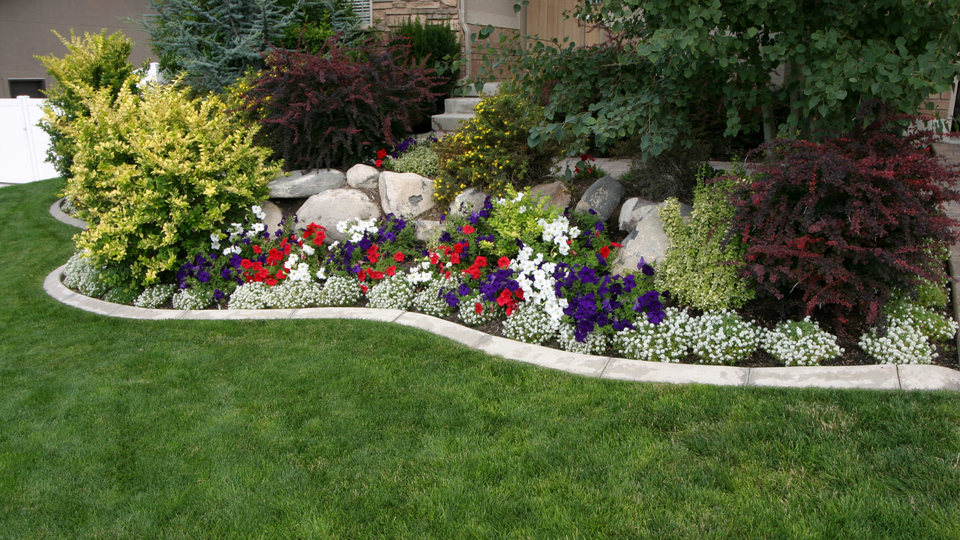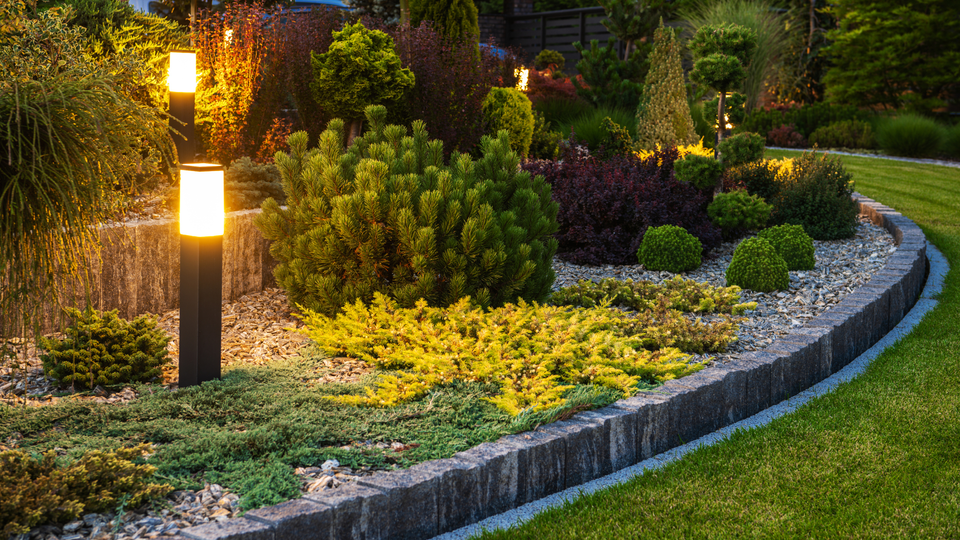

Introduction
Concrete curbing offers a significant upgrade to any landscape by enhancing the beauty of your garden or yard and adding value to your property. Additionally, many homeowners find that concrete curbs add a sense of completion to their landscaping projects. This guide explores the key benefits of concrete curb installation, covering its aesthetic appeal, functionality, and long-term durability.
What is Concrete Curbing?
Concrete curbing refers to using concrete to create borders or edges around various elements in your landscape, such as flower beds, pathways, and driveways. It creates clean, crisp lines that define different areas of your outdoor space, making your garden appear more structured and organized.
Not only does it enhance visual appeal, but concrete curbing also prevents soil erosion, controls mulch spread, and keeps gravel or stone pathways neatly contained.
Additionally, concrete curbing is incredibly durable and requires minimal maintenance compared to other edging materials
Not only does it enhance visual appeal, but concrete curbing also prevents soil erosion, controls mulch spread, and keeps gravel or stone pathways neatly contained.
Additionally, concrete curbing is incredibly durable and requires minimal maintenance compared to other edging materials

Benefits of Concrete Curbing
Aesthetic Appeal
Concrete curbing adds a clean, polished look to any yard. Whether you own a modern home or prefer a more traditional look, a concrete curb can be tailored to complement the specific design style of your outdoor space.
The versatility of concrete curbing means it can be molded into different styles and patterns, such as curves, straight lines, or intricate designs, effectively enhancing both contemporary and classic landscapes.
Additionally, you can incorporate stamps or unique finishes to create a one-of-a-kind border that reflects your personal taste. This level of customization ensures that your concrete curbing seamlessly integrates with other elements of your garden, such as patios, walkways, or water features, establishing a consistent and visually appealing outdoor environment.
Functionality
Concrete curbing is not just about looks. It also helps to define spaces within your yard. Creating clear boundaries prevents the spread of grass into flower beds and other areas, making lawn maintenance more manageable and efficient.
Concrete curbs can also serve as a protective barrier, reducing the chances of damaging plants and garden structures during mowing or other yard work.
Durability
Concrete is a highly durable material that can withstand various weather conditions. Unlike other materials, it does not rot, warp, or become infested by pests. This means your concrete curbs will last for years with minimal maintenance.
Did you know? Concrete curbing can also help with water drainage, reducing erosion in your garden. Additionally, it can stand up to the wear and tear of heavy foot traffic, making it ideal for high-use areas.
Concrete curbing adds a clean, polished look to any yard. Whether you own a modern home or prefer a more traditional look, a concrete curb can be tailored to complement the specific design style of your outdoor space.
The versatility of concrete curbing means it can be molded into different styles and patterns, such as curves, straight lines, or intricate designs, effectively enhancing both contemporary and classic landscapes.
Additionally, you can incorporate stamps or unique finishes to create a one-of-a-kind border that reflects your personal taste. This level of customization ensures that your concrete curbing seamlessly integrates with other elements of your garden, such as patios, walkways, or water features, establishing a consistent and visually appealing outdoor environment.
Functionality
Concrete curbing is not just about looks. It also helps to define spaces within your yard. Creating clear boundaries prevents the spread of grass into flower beds and other areas, making lawn maintenance more manageable and efficient.
Concrete curbs can also serve as a protective barrier, reducing the chances of damaging plants and garden structures during mowing or other yard work.
Durability
Concrete is a highly durable material that can withstand various weather conditions. Unlike other materials, it does not rot, warp, or become infested by pests. This means your concrete curbs will last for years with minimal maintenance.
Did you know? Concrete curbing can also help with water drainage, reducing erosion in your garden. Additionally, it can stand up to the wear and tear of heavy foot traffic, making it ideal for high-use areas.

Types of Concrete Curb
There are several types of concrete curbs to consider, each suited to different needs and aesthetics. Some popular types include:
- Mower Curbs: Ideal for edging lawns and making mowing easier.
- Slant Style Curbs: Great for a modern, sleek look.
- Square Edge Curbs: Perfect for a classic, timeless appearance.
Each type of curb offers unique benefits and can be tailored to fit your landscape's specific layout and stylistic preferences.

Concrete Curb Installation
Concrete curb installation involves preparing the site, pouring concrete curb, and allowing it to set. The process starts with marking the area and digging a trench.
Then, forms are set up to shape the concrete. Once the forms are in place, pouring the concrete curb is the next step.
After the concrete has been poured, it is smoothed and left to cure.
Quick Tip: Always ensure proper site preparation to enhance the longevity of your concrete curbs. Proper installation is essential to avoid cracking and other issues down the line.
Then, forms are set up to shape the concrete. Once the forms are in place, pouring the concrete curb is the next step.
After the concrete has been poured, it is smoothed and left to cure.
Quick Tip: Always ensure proper site preparation to enhance the longevity of your concrete curbs. Proper installation is essential to avoid cracking and other issues down the line.
Forming Concrete Curb
Forming a concrete curb is a crucial phase in the installation process. Forms are temporary structures that hold the concrete in place until it hardens. They define the shape and size of the curb. Accurate forming ensures that your curbs will be even and durable.
Quick Tip: Use high-quality materials for your forms to maintain the integrity of your curbs. Additionally, precise forming can allow for the creation of intricate designs and patterns, adding an artistic touch to your curbs.
Quick Tip: Use high-quality materials for your forms to maintain the integrity of your curbs. Additionally, precise forming can allow for the creation of intricate designs and patterns, adding an artistic touch to your curbs.

Additional Landscaping Options
Concrete curbing can seamlessly integrate with other landscaping features to create a unified look. Pairing your curbs with well-maintained lawns, flower beds, and garden paths can enhance your home's overall curb appeal.
Complementing elements like outdoor lighting, water features, or garden sculptures can further elevate the space, making it a perfect retreat. Consider using similar materials and color schemes throughout your landscape for a cohesive design.
Complementing elements like outdoor lighting, water features, or garden sculptures can further elevate the space, making it a perfect retreat. Consider using similar materials and color schemes throughout your landscape for a cohesive design.
Conclusion
Concrete curbing offers numerous benefits for homeowners. From enhancing your landscape's aesthetic appeal to providing functional and durable borders, it is a versatile addition to any yard.
Whether you're interested in mower curbs, slant style curbs, or square edge curbs, there are many types of concrete curbs to suit your needs.
With proper concrete curb installation and forming concrete curb processes, you can enjoy the beauty and efficiency of this landscape feature for years to come.
Whether you're interested in mower curbs, slant style curbs, or square edge curbs, there are many types of concrete curbs to suit your needs.
With proper concrete curb installation and forming concrete curb processes, you can enjoy the beauty and efficiency of this landscape feature for years to come.
